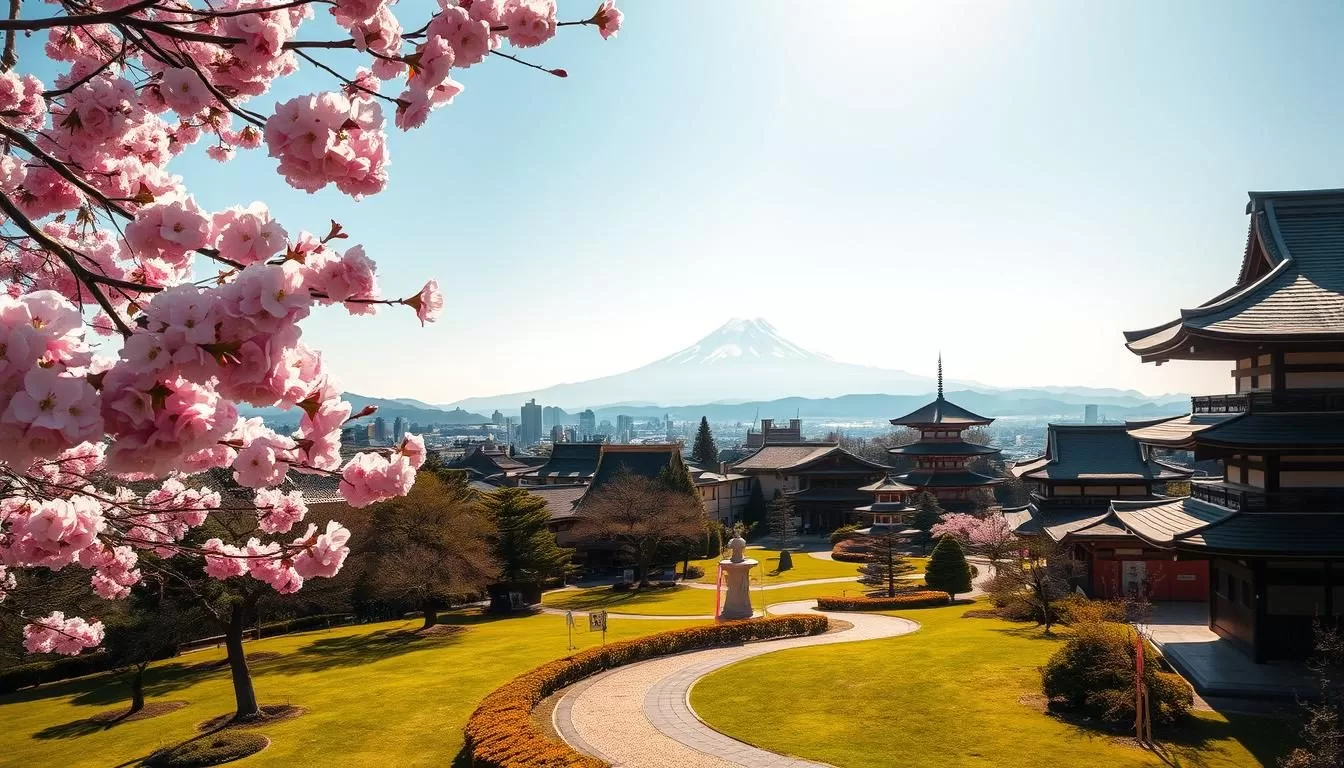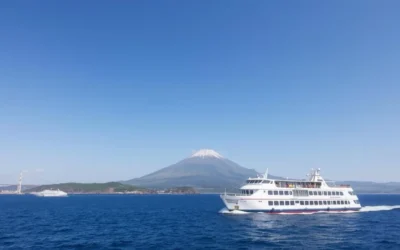✓ Accommodations✓ Flights✓ Rental Cars✓ Tours & Activities
Planning a trip to Kyōto can be a daunting task, given its rich cultural heritage and numerous attractions. With 3 to 5 days, you can explore the best of what this enchanting city has to offer.
When visiting Kyōto, you’re not just exploring a destination; you’re immersing yourself in a world of stunning temples, traditional districts, and modern comforts. A well-planned itinerary is your key to unlocking the essence of this beautiful prefecture.
Discover the perfect way to experience Kyōto’s iconic sites, hidden gems, and authentic experiences with our comprehensive guide. You’ll find practical information on transportation, accommodations, and seasonal considerations to make the most of your visit.
Discovering the Cultural Heart of Japan
When traveling to Japan, one of the most significant destinations on your way is Kyoto, a city steeped in history and culture. Kyoto is one of my favorite prefectures to visit in Japan, and once you’ve had a chance to experience it, it’s easy to see why.
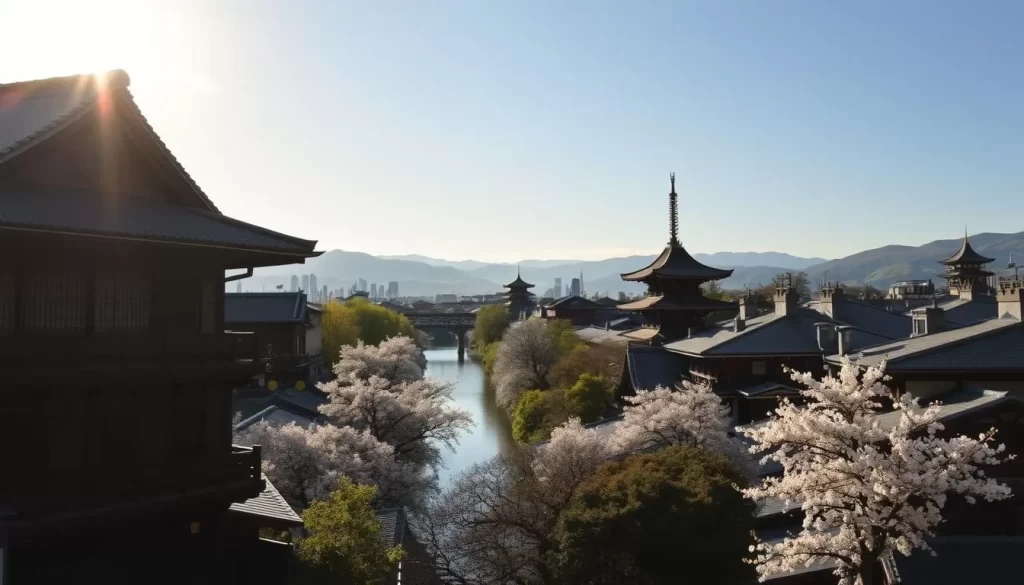
Why Kyoto Deserves Five Full Days
Kyoto served as Japan’s imperial capital for over 1,000 years, resulting in an unparalleled concentration of cultural treasures. Unlike many Japanese cities that were heavily bombed during WWII, Kyoto was spared destruction, preserving its ancient temples and traditional architecture for visitors to enjoy today. With so much to see, a trip to Kyoto requires ample time to explore its many wonders.
- Five days allows you to explore beyond the obvious tourist spots and discover the authentic charm of Kyoto’s various neighborhoods at a comfortable pace.
- The city’s grid layout makes navigation relatively simple once you understand the main districts, with most major sights clustered in the eastern and northern parts of the city.
Best Time to Visit Kyoto
The best times to visit Kyoto are during cherry blossom season (late March to early April) and autumn foliage (November), though these periods also bring the largest crowds and highest prices. For a more relaxed experience, consider visiting in May or October, when the weather is pleasant and there are fewer tourists.
Getting to and Around Kyoto
Getting around Kyoto is straightforward with its efficient bus network, subway lines, and rental bicycles. To maximize your time, plan your itinerary in advance, as some attractions are spread out across the city. Understanding the main districts and having a clear way to navigate will make your visit to this historic place even more enjoyable.
By planning your visit carefully and allowing ample time to explore, you’ll be able to experience the full depth of Kyoto’s cultural heritage and create a memorable Kyoto itinerary that includes its most significant part.
Where to Stay in Kyoto

Choosing where to stay in Kyoto is a crucial part of planning your trip, with options ranging from modern hotels to traditional ryokans. The right hotel or accommodation can significantly enhance your travel experience.
Downtown Kyoto Accommodations
Downtown Kyoto, encompassing areas around Kyoto Station, Kawaramachi, and Shijo, offers modern hotels with easy access to transportation, shopping, and dining. This area is ideal for first-time visitors who want to maximize their sightseeing time.
Gion and Higashiyama Historic Districts
Staying in the atmospheric Gion or Higashiyama district allows you to experience traditional Japanese architecture and possibly spot geisha in the evening. Though accommodations here tend to be more expensive, the unique experience is worth considering.
Traditional Ryokan Experience
A traditional ryokan stay provides an authentic Japanese experience with tatami mat floors, futon bedding, and often kaiseki multi-course dinners. Be prepared for earlier curfews and scheduled meal times, adding to the traditional ambiance of the area and its streets at night.
When booking, consider the proximity to attractions you’re interested in, as Kyoto is more spread out than many visitors initially realize.
Day 1: Eastern Kyoto – Historic Temples and Districts
Embark on your Kyoto adventure with a visit to the iconic Fushimi Inari Taisha, famous for its thousands of vermilion torii gates.
Morning: Fushimi Inari Taisha
Begin your Kyoto adventure early at Fushimi Inari Taisha, arriving before 8 AM to experience the famous vermillion torii gate tunnels before the crowds arrive and to capture stunning photos in the morning light. Allow 2-3 hours to explore the shrine complex, with the option to hike all the way to the summit of Mount Inari or just to the Yotsutsuji intersection for panoramic city views.
Afternoon: Exploring Higashiyama
After lunch, make your way to the historic Higashiyama district to wander its beautifully preserved streets lined with traditional wooden machiya houses. Visit Kiyomizu-dera Temple, perched on a hillside with its famous wooden stage offering spectacular views of Kyoto.
Explore the atmospheric streets of Ninenzaka and Sannenzaka, stopping at traditional shops selling Japanese crafts, ceramics, and sweets while making your way north through the district.
Evening: Gion District and Geisha Spotting
As evening approaches, head to the Gion district, Kyoto’s most famous geisha quarter, where you might spot geiko (Kyoto’s geisha) or maiko (apprentice geisha) making their way to evening appointments. End your first day with dinner at one of Gion’s restaurants, perhaps trying Kyoto’s refined kaiseki cuisine or more casual local specialties like yudofu (tofu hot pot).
Day 2: Arashiyama – Bamboo Groves and Natural Beauty
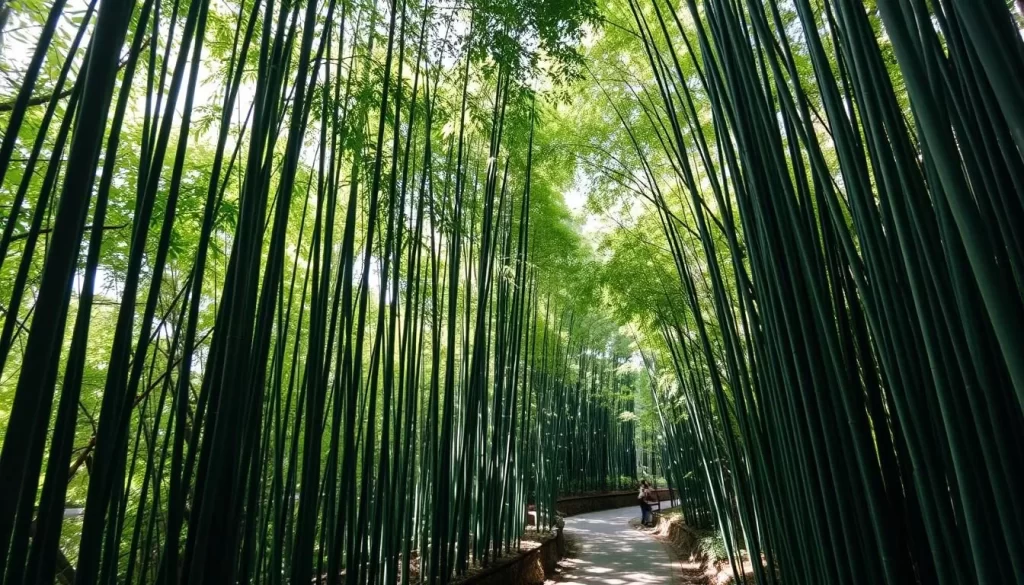
Day 2 in Kyoto brings you to Arashiyama, where the majestic bamboo grove and serene natural surroundings will captivate your senses. Start your day early to experience the tranquility of this beautiful district.
Morning: Arashiyama Bamboo Forest
Begin your morning at the iconic Arashiyama Bamboo Grove. Arriving before 7:30 AM will allow you to enjoy the magical atmosphere without the crowds and capture stunning photos of sunlight filtering through the towering bamboo stalks.
Midday: Tenryu-ji Temple and Okochi Sanso Villa
After exploring the bamboo forest, visit the adjacent Tenryu-ji Temple, a UNESCO World Heritage site featuring one of Kyoto’s finest Zen gardens designed to incorporate the surrounding mountains as part of its landscape. Take time to explore the often-overlooked Okochi Sanso Villa, the former estate of a famous Japanese actor, offering beautiful gardens and traditional buildings.
Afternoon: Hozugawa River Boat Ride
In the afternoon, enjoy a scenic boat ride along the Hozugawa River, where traditional wooden boats navigate through gentle rapids and stunning scenery, particularly beautiful during autumn foliage season. As you make way through the river, take in the breathtaking views and enjoy the serene atmosphere.
For lunch, try one of the riverside restaurants in Arashiyama that specialize in yudofu (tofu hot pot), a local Kyoto specialty. After lunch, cross the iconic Togetsukyo Bridge and explore the monkey park on the southern bank if you’re interested in seeing Japanese macaques. Before returning to central Kyoto, browse the traditional shops along Arashiyama’s main street for unique souvenirs.
Day 3: Northern Temples and Zen Gardens
On your third day in Kyoto, explore the city’s serene northern temples and Zen gardens. This day is dedicated to experiencing some of Kyoto’s most revered heritage sites, including the iconic Kinkaku-ji Temple.
Morning: Kinkaku-ji (Golden Pavilion)
Begin your day with a visit to Kinkaku-ji, one of Japan’s most iconic temple sights. Arrive early to avoid the crowds that gather throughout the day at this extremely popular UNESCO World Heritage Site. The gold-leaf-covered pavilion sits beside a reflective pond in a meticulously maintained garden setting, offering breathtaking views.
Midday: Ryoan-ji Temple and Rock Garden
Next, make way to nearby Ryoan-ji Temple to see Japan’s most famous rock garden, a minimalist Zen masterpiece. For lunch, try one of the local restaurants that specialize in shojin ryori (Buddhist vegetarian cuisine).
Afternoon: Philosopher’s Path and Ginkaku-ji
In the afternoon, travel to eastern Kyoto to walk the Philosopher’s Path, a pleasant stone pathway that follows a canal lined with cherry trees. End your temple explorations at Ginkaku-ji (Silver Pavilion), which offers beautiful gardens, including a unique sand garden with a perfectly formed sand cone representing Mount Fuji.
As you explore these serene temples and gardens, you’ll experience the profound tranquility that characterizes traditional Japanese garden design, making this place a truly unforgettable part of your journey.
Day 4: Nara Day Trip – Ancient Capital and Deer Park
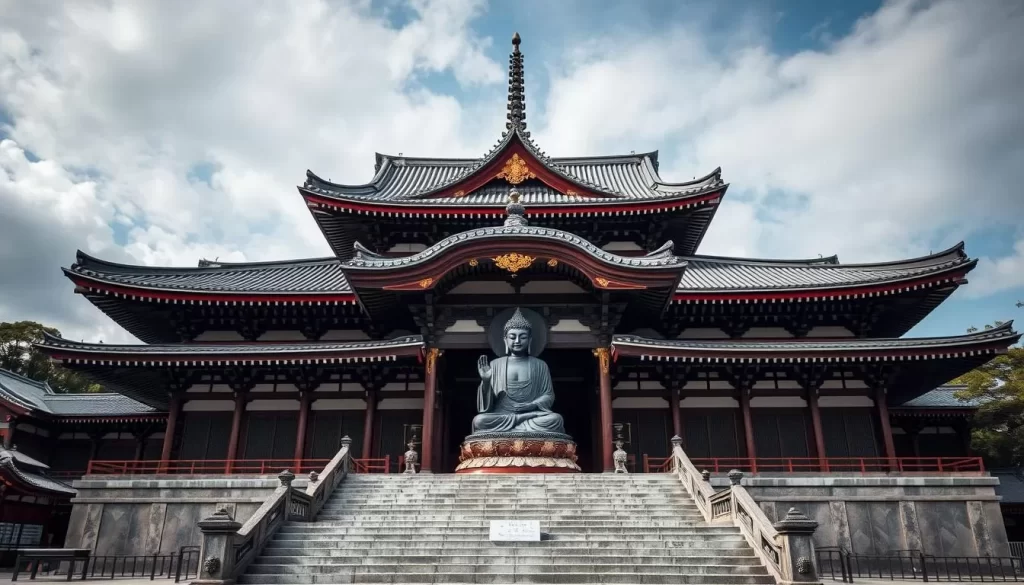
Nara, Japan’s first permanent capital, is just a short train ride from Kyoto, making it an ideal day trip destination. You can easily take local transportation to Nara, and Google Maps is quite reliable for this journey.
Morning: Todai-ji Temple and Great Buddha
Begin your day at Todai-ji Temple, home to the Great Buddha (Daibutsu), one of Japan’s largest bronze Buddha statues standing 15 meters tall within the world’s largest wooden building. This temple is a significant historical landmark and a must-visit attraction in Nara.
Nara Park and Deer Encounters
After visiting Todai-ji Temple, head to Nara Park, known for its over 1,200 wild but tame deer that roam freely. These deer are considered sacred messengers of the gods in Shinto belief and are designated as a national treasure. You can purchase special deer crackers from vendors throughout the park to feed the deer, who have learned to bow to visitors before receiving their treats.
Afternoon: Kasuga Taisha Shrine and Isuien Garden
In the afternoon, visit the elegant Kasuga Taisha Shrine, famous for its thousands of stone and bronze lanterns that line the paths and hang from the buildings, creating a magical atmosphere. Take time to appreciate Isuien Garden, a peaceful traditional Japanese garden with ponds, carefully pruned trees, and borrowed scenery techniques that incorporate distant mountains into the garden’s design.
As you explore Nara, you’ll find that it’s not just about the major attractions; the city’s charm also lies in its food stalls and traditional eateries. Before returning to Kyoto, take a stroll through Naramachi, the former merchant district with its narrow lanes and well-preserved traditional houses, some converted into museums, shops, and cafés where you can sample local specialties.
By following this itinerary, you’ll experience the best of Nara, from its historical temple to its serene park and beautiful garden, making for a memorable trip from Kyoto.
Day 5: Downtown Kyoto and Cultural Experiences
Conclude your Kyoto journey with a deep dive into its food and cultural experiences. Start your day by visiting Nishiki Market, often referred to as “Kyoto’s Kitchen.”
Morning: Nishiki Market Food Tour
Nishiki Market is a lively and jam-packed shopping alley known for its fresh seafood and Japanese street food. You can sample a variety of local delicacies, from takoyaki and tempura shrimp to fresh sushi and rolled egg omelettes.
Begin your final day in Kyoto by immersing yourself in the city’s food culture at Nishiki Market, where over 100 shops and stalls sell everything from fresh seafood to Kyoto specialties and street food. Sample local delicacies like yuba (tofu skin), tsukemono (pickled vegetables), and wagashi (traditional Japanese sweets) from vendors who have perfected their craft over generations.
Midday: Shopping in Teramachi and Shinkyogoku
After exploring the market, spend the late morning shopping in the covered arcades of Teramachi and Shinkyogoku. You’ll find everything from traditional crafts and ceramics to modern fashion and quirky souvenirs.
For lunch, choose from one of the many restaurants in the downtown area, perhaps trying Kyoto-style ramen, kyo-kaiseki (Kyoto’s refined multi-course cuisine), or obanzai (Kyoto home-style cooking).
Afternoon: Traditional Tea Ceremony
In the afternoon, participate in a traditional Japanese tea ceremony, where you’ll learn about the history and philosophy of this cultural practice while experiencing the meticulous preparation and serving of matcha green tea.
Several tea houses in Kyoto offer ceremonies specifically designed for foreign visitors with English explanations, including some that allow you to wear a kimono during the experience for a more immersive cultural encounter.
End your Kyoto stay with dinner at one of the atmospheric restaurants along Pontocho Alley, a narrow pedestrian street running parallel to the Kamogawa River that transforms into a magical dining district at night.
Kyōto City, Japan: Itinerary Ideas for a 5-day Visit – Seasonal Adjustments
Kyoto’s beauty transforms with the seasons, making it essential to adjust your Kyoto itinerary accordingly. The city’s charm varies significantly across different times of the year, offering a unique experience in every season.
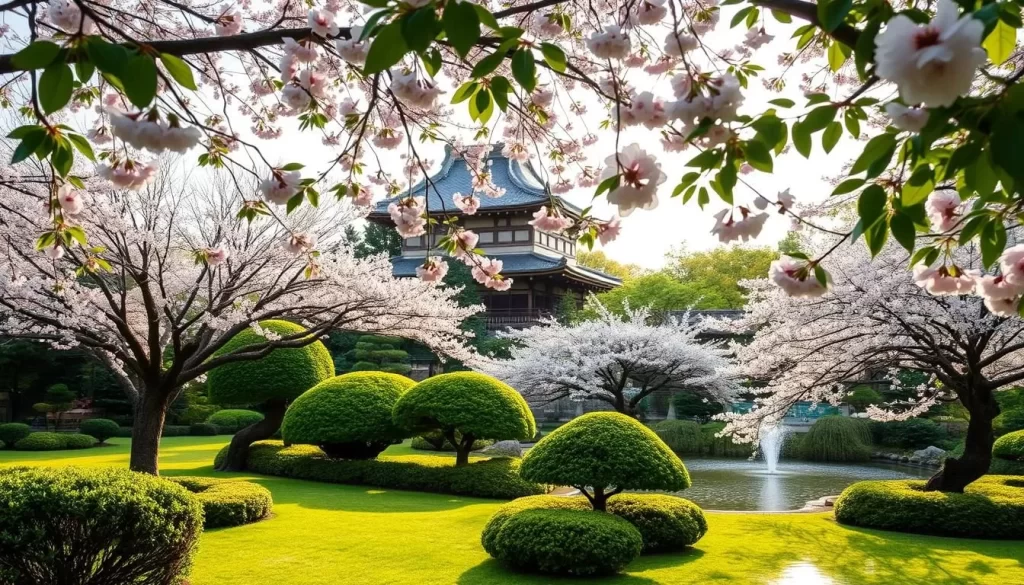
Spring: Cherry Blossom Season Highlights
Spring, particularly late March to early April, is a peak time to visit Kyoto, with the famous cherry blossoms blooming across the city. Prime viewing spots include Maruyama Park, the Philosopher’s Path, and along the Kamogawa River. It’s advisable to book your accommodations well in advance for this popular season.
Autumn: Fall Foliage Viewing Spots
Autumn, from mid-November to early December, offers spectacular fall foliage, with temples like Tofuku-ji, Eikando, and Arashiyama becoming even more magical when surrounded by vibrant red and gold maple leaves. These places are must-visit spots during your trip.
Summer and Winter Considerations
Even though spring and autumn are the peak seasons, summer and winter have their own unique attractions. Summer brings the Gion Matsuri festival in July, one of Japan’s most important festivals. Winter, on the other hand, offers a quieter, more contemplative Kyoto experience, with occasional snow creating postcard-perfect scenes at temples like Kinkaku-ji.
Adjusting your trip plans according to the season can significantly enhance your experience of this historic city. Whether you’re visiting during the peak seasons or opting for the shoulder season, Kyoto’s cultural treasures and historic atmosphere can be appreciated year-round.
Dining Experiences in Kyoto
When you visit Kyoto, you’ll discover that the city’s dinner options are as diverse as they are delicious, showcasing local ingredients and cooking techniques. Kyoto’s culinary scene is renowned for its traditional Japanese cuisine, offering a wide range of dining experiences that cater to different tastes and preferences.
Traditional Kaiseki Dining
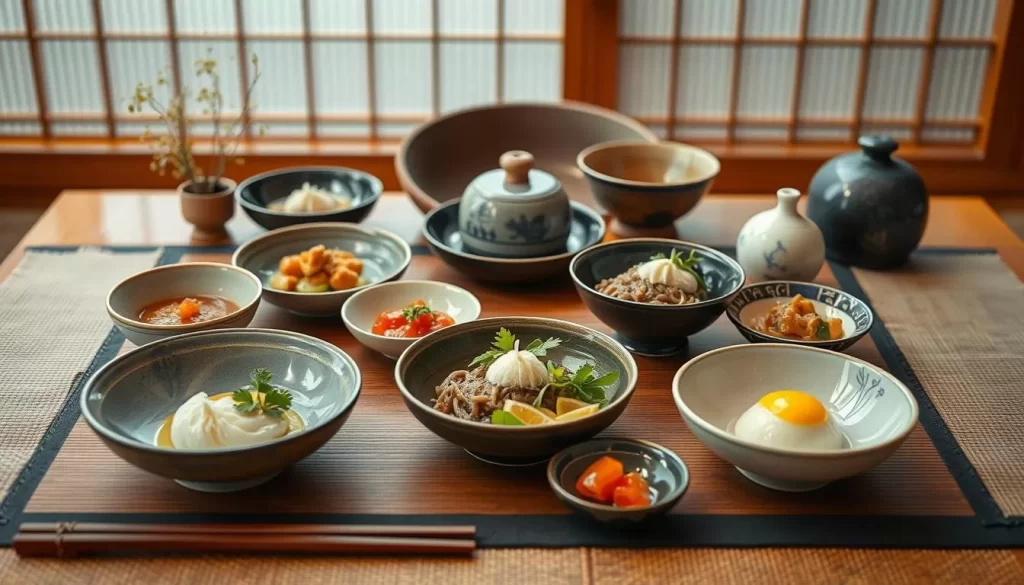
Kaiseki ryori, Japan’s haute cuisine, originated in Kyoto and features meticulously prepared seasonal dishes served in a specific order. Restaurants like Gion Sekiya and Hyotei offer memorable, though expensive, dining experiences. For a truly authentic kaiseki experience, be sure to book in advance, as these restaurants are popular among locals and tourists alike.
Street Food and Market Eats
For a more accessible taste of Kyoto’s cuisine, try shojin ryori (Buddhist vegetarian cuisine) at temple restaurants, yudofu (tofu hot pot) especially in Arashiyama, or Kyoto-style obanzai (home-style cooking) at local eateries. Nishiki Market provides an excellent opportunity to sample various Kyoto specialties in one location, from fresh seafood to traditional sweets, pickles, and tea.
Atmospheric Dining in Pontocho Alley
Pontocho Alley, a narrow pedestrian street running parallel to the Kamogawa River, transforms at night into one of Kyoto’s most atmospheric dining districts. Restaurants in this area range from exclusive traditional establishments to more accessible izakayas, offering a unique dining experience under the stars with river views. During summer months, many restaurants along the Kamogawa River set up temporary outdoor dining platforms called “yuka,” enhancing the dining experience with cooling breezes.
Don’t miss trying Kyoto’s famous matcha (green tea) in various forms, from traditional tea ceremony experiences to modern desserts like matcha parfaits, ice cream, and confectionery available throughout the city. Whether you’re looking for a traditional dinner or a casual food experience, Kyoto has something to offer for every palate and preference.
Cultural Experiences to Add to Your Itinerary
As you explore Kyoto, you’ll discover a wealth of cultural activities to enrich your journey. Beyond sightseeing, Kyoto offers numerous immersive cultural experiences that can add depth and personal connection to your visit while creating lasting memories of traditional Japanese arts and crafts.
Kimono Rental and Photography
Renting a kimono for a day provides not only beautiful photos but also a deeper appreciation for traditional Japanese clothing as you experience walking through historic districts dressed in this elegant attire.
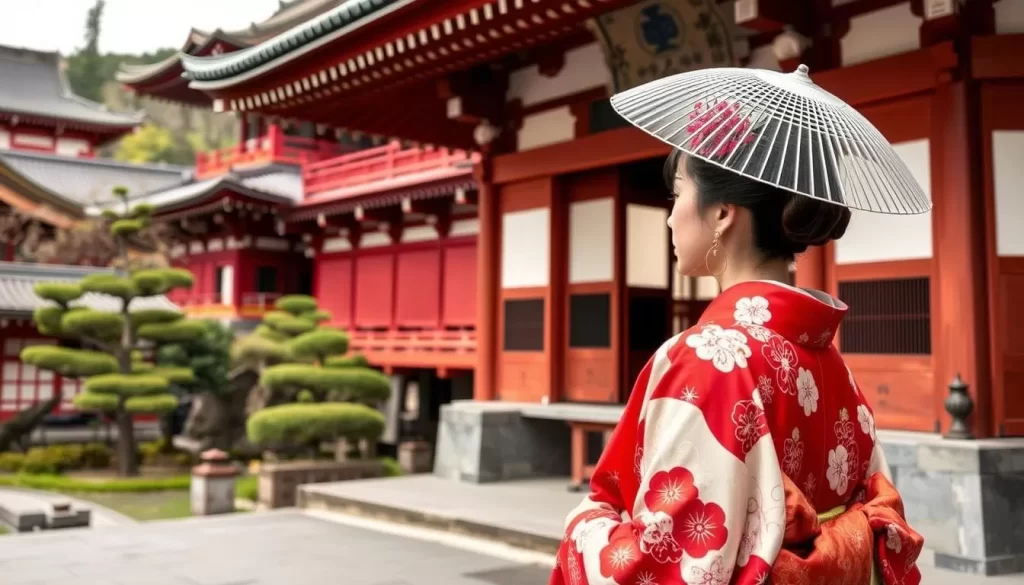
Sake Tasting in Fushimi District
After visiting Fushimi Inari Taisha, explore the nearby Fushimi sake district, where you can tour traditional breweries and participate in sake tastings to learn about Japan’s national beverage in one of the country’s premier sake-producing regions.
Japanese Cooking Classes
Japanese cooking classes teach you to prepare authentic dishes like sushi, tempura, or Kyoto specialties that you can recreate at home, with many classes including a market tour to learn about traditional ingredients.
Participating in a traditional tea ceremony offers insight into the philosophy of Japanese hospitality and aesthetics, with several venues offering experiences specifically designed for foreign visitors with English explanations.
To further enrich your Kyoto experience, consider traditional craft workshops where you can try your hand at activities like calligraphy, woodblock printing, or pottery making under the guidance of skilled artisans, creating a personal souvenir of your time in this historic area.
Practical Tips for Navigating Kyoto
As you plan your way through Kyoto, consider these practical tips to make the most of your trip. With numerous temples, gardens, and cultural experiences, Kyoto is a city that requires some planning to navigate efficiently.
Transportation Passes and Options
To get around Kyoto, you’ll need to understand the public transportation system. Consider purchasing a Kyoto Bus Pass or Kyoto Sightseeing Pass for unlimited travel on buses and/or subways, which can save you money if you’re making multiple trips per day between attractions. An IC card like Suica, Pasmo, or ICOCA is also essential for convenient travel on trains, trams, and buses.
| Transportation Option | Description | Benefit |
|---|---|---|
| Kyoto Bus Pass | Unlimited travel on Kyoto buses | Saves money on multiple trips |
| Kyoto Sightseeing Pass | Unlimited travel on buses and subways | Convenient travel across Kyoto |
| IC Card (Suica, Pasmo, ICOCA) | Reusable card for public transport | Easy travel on trains, trams, and buses |
Etiquette at Temples and Shrines
When visiting Kyoto’s temples, be mindful of proper etiquette: remove your shoes when required, speak quietly, follow photography rules, and participate in purification rituals at the entrance. This will ensure a respectful visit and a more meaningful experience for you and the people around you.
Avoiding Crowds at Popular Attractions
To avoid crowds at popular attractions, arrive early (before 9 AM) or late in the afternoon (after 3 PM), and consider visiting major sites on weekdays rather than weekends. Many temples close around 4:30 PM or 5:00 PM, so check the hours of operation in advance and plan your daily itinerary accordingly.
![]()
By planning your trip effectively and being mindful of your surroundings, you’ll be able to make way for a memorable experience in Kyoto. Wear comfortable shoes, as you’ll likely walk 15,000-25,000 steps daily, and dress in layers as Kyoto’s weather can change throughout the day.
Conclusion: Creating Lasting Memories in Kyoto
Kyoto, with its ancient traditions and modern conveniences, offers an unforgettable travel experience. As you’ve explored this Kyoto itinerary, you’ve discovered the city’s hidden gems and popular spots, from the serene Arashiyama bamboo grove to the vibrant streets of Gion.
Your trip to Kyoto is not just about visiting temples and gardens; it’s about immersing yourself in the local culture. Whether you’ve stayed in a luxury hotel or a traditional ryokan, enjoyed dinner at high-end restaurants, or participated in a tea ceremony, every moment has contributed to your unique experience.
As you plan your next visit, remember to leave some way for spontaneous exploration. Kyoto rewards those who approach it with patience and curiosity, revealing its treasures gradually. With this Kyoto itinerary, you’re well on your way to creating lasting memories of your trip to this enchanting city.
The above is subject to change.
Check back often to TRAVEL.COM for the latest travel tips and deals.
